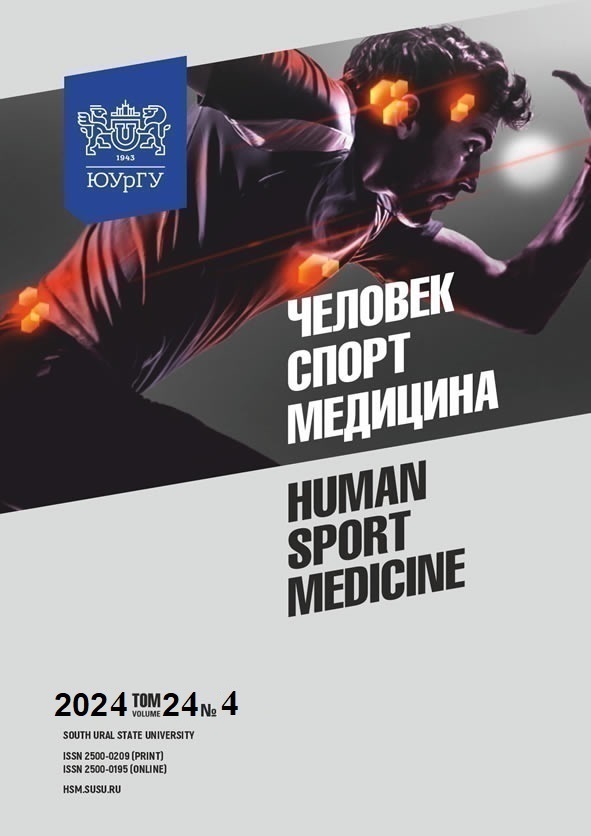ASSESSMENT OF TRUNK FLEXOR AND EXTENSOR MUSCLE STRENGTH IN ISOKINETIC MODE
Abstract
Aim. This study aims to outline approaches to measuring trunk flexor and extensor muscle strength in isokinetic contractions. Materials and methods. Research methods consist of isokinetic assessments of trunk flexor and extensor muscle (TFEM) strength using the IsoMed 2000 dynamometer, followed by a methodological description of TFEM strength measurements. The study sample involved young soccer players (13–17 years old). Results. The study reveals significant increases in the relative strength of both flexor (p < 0.001, R2 = 0.137) and extensor (p < 0.001, R2 = 0.254) muscles with increasing age. Notably, the flexor to extensor muscle ratio remained the same across ages. Conclusion. The results obtained contribute to the identification of reference values for trunk muscle strength and the flexor to extensor muscle ratio. This study provides a foundation for future research in muscle strength deficiency and its relationship to sports injuries.
References
References on translit
Copyright (c) 2025 Human. Sport. Medicine

This work is licensed under a Creative Commons Attribution-NonCommercial-NoDerivatives 4.0 International License.















